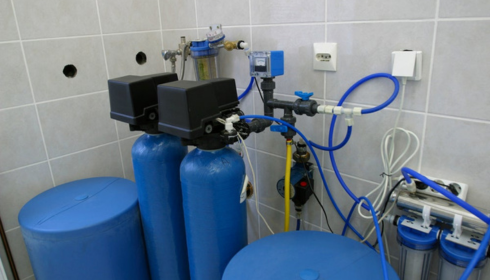Water is everywhere in our lives. It wakes us up in the shower, boils pasta in the evening, swirls soap around the washing machine, and fills the glass you hand a guest without thinking twice. For something so ordinary, it’s amazing how quickly it becomes the focus when it doesn’t feel right. Maybe there’s a faint metallic taste, maybe the laundry never comes out soft, or maybe you’re tired of endless bottled water cases stacked in the pantry. Whatever sparks the thought, many families reach the same conclusion: it’s time to look into water treatment systems.
What People Actually Say
When you’re on the fence about making a big change, nothing cuts through the noise like hearing from others who’ve already done it. That’s why digging into Infinite Water customer reviews can be such an eye-opener. People don’t just talk about technical specs—they share everyday wins, like how their coffee tastes better, or how they stopped buying bottled water altogether. The value isn’t just in reading five stars; it’s in catching those little details that remind you this isn’t just plumbing hardware—it’s something that reshapes daily life.
The Question Everyone Asks: Cost
Of course, the practical question always comes next: what’s this going to cost? The reality is, the home water treatment system cost varies depending on the size of your house, your water source, and what issues you’re dealing with. A small setup for light filtering is very different from a whole-house system that handles hard water, iron, or bacteria. But here’s the thing—many homeowners discover they were already spending a surprising amount on bottled water, appliance repairs, and cleaning supplies. Suddenly, the cost doesn’t feel like “extra”—it feels like redirecting money toward a smarter solution.
Everyday Differences You Notice Right Away
Once a system is in place, it’s the little changes that catch you off guard. Soap lathers more easily. Towels feel softer. Pasta tastes cleaner. Ice cubes look crystal clear instead of cloudy. Even your skin and hair can feel less dry after showers. These aren’t flashy changes, but they’re the kind that sneak into your routines until one day you realize everything just feels better. That’s the kind of return on investment you can’t always measure in dollars.
The Search for the Best
With so many options on the market, it’s easy to feel overwhelmed. But if you’re serious about long-term value, looking for the best whole home water purification system makes sense. Instead of patching up one sink or relying on a single faucet filter, whole-home setups tackle the problem at the entry point, protecting every tap, every appliance, and every shower. It’s comprehensive peace of mind. And while the phrase “best system” will look different depending on whether you’re on city water or a rural well, the principle stays the same: you want something that works everywhere in your home, not just in the kitchen.
The Environmental Side
Another layer to this conversation is sustainability. Every time you stop buying bottled water, you cut down on plastic waste. Every appliance that lasts longer because it’s not clogged with mineral buildup means less goes to the landfill. Even reducing cleaning chemicals adds up. People often think of water systems as personal conveniences, but they ripple outward, quietly benefiting the environment in ways that feel good to count alongside the household improvements.
Why Maintenance Isn’t Scary
Some families hesitate because they picture endless tinkering. But modern systems are built with convenience in mind. Most filters need replacing only once or twice a year. Salt refills for softeners take minutes. Some systems even send reminders when it’s time to check something. For those who don’t want to deal with it at all, service providers often include maintenance packages that keep everything humming along without you needing to lift a finger. Compared to the daily hassle of hauling bottled water or scrubbing away scale, the upkeep is minimal.
Stories That Stick
The most convincing arguments often come from real stories. A family who finally stopped apologizing to guests about their water’s taste. A couple who noticed their dishwasher lasting longer than expected. A parent relieved that their child no longer complains about “funny water.” These are the details that remind us water treatment isn’t abstract. It’s personal. It affects the quality of life in ways that statistics can’t always capture.
The Long-Term Lens
It’s easy to look at cost upfront and pause. But zooming out, the bigger picture becomes clear. Treated water keeps plumbing cleaner, reducing expensive repairs. It extends the lifespan of appliances like water heaters and washing machines. It saves money on cleaning products, bottled water, and even electricity when systems run more efficiently. When you weigh all of that against the upfront investment, the math shifts. Suddenly, the long-term savings outweigh the hesitation.
The Emotional Comfort
Beyond dollars, beyond reviews, beyond tech specs, there’s the emotional comfort that comes with clean water. It’s the simple act of filling a glass for your child without second-guessing. It’s the pride in handing a guest a drink without apology. It’s the calm that comes from knowing the backbone of your household—the water running through it—is solid. That peace of mind doesn’t scream for attention, but it quietly reshapes how you feel about your home.
Wrapping It Up
Water treatment isn’t flashy. It won’t be the first thing you show off during a house tour. But it’s one of those upgrades that quietly elevates everything else. Cleaner showers, tastier coffee, longer-lasting appliances—it’s the background improvement that makes life smoother in dozens of ways you didn’t even expect. Whether you’re comparing costs, reading reviews, or searching for the best fit for your home, the goal is simple: trust your water again. And once you do, you’ll wonder how you ever lived with less.

